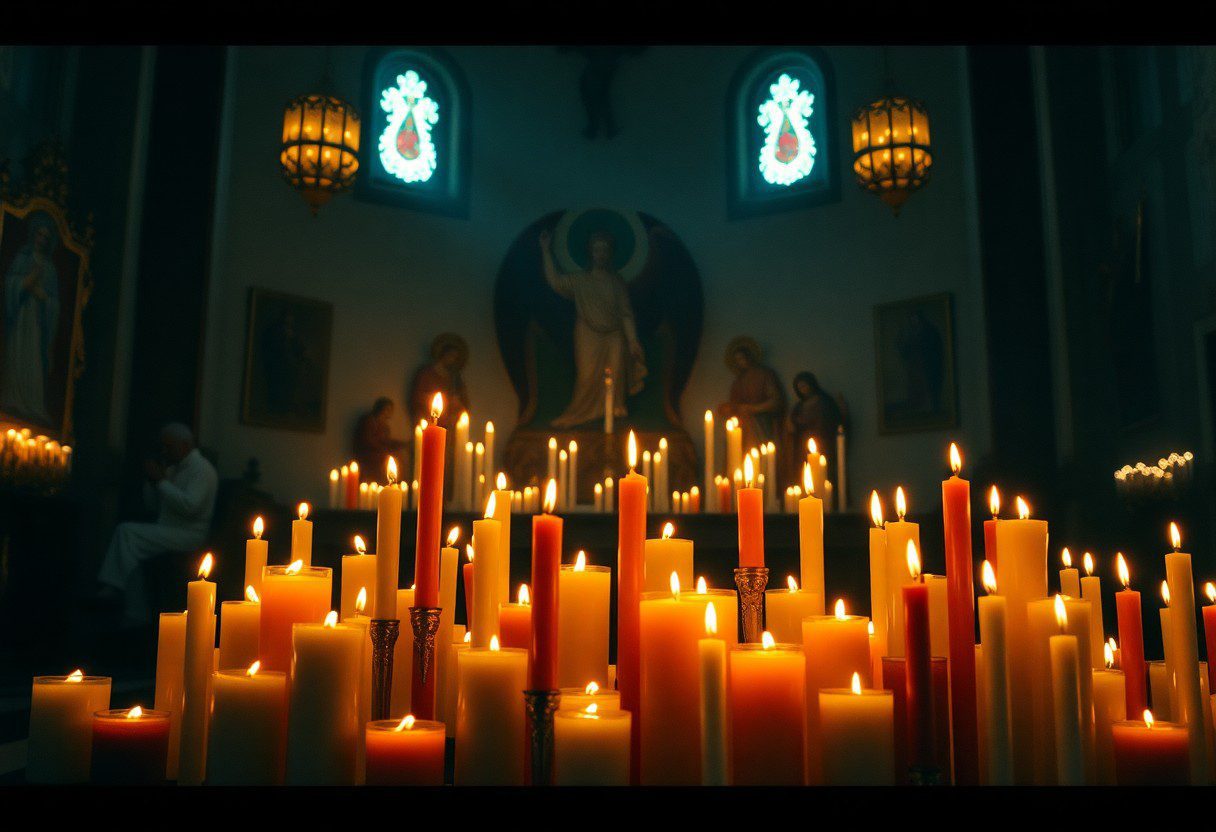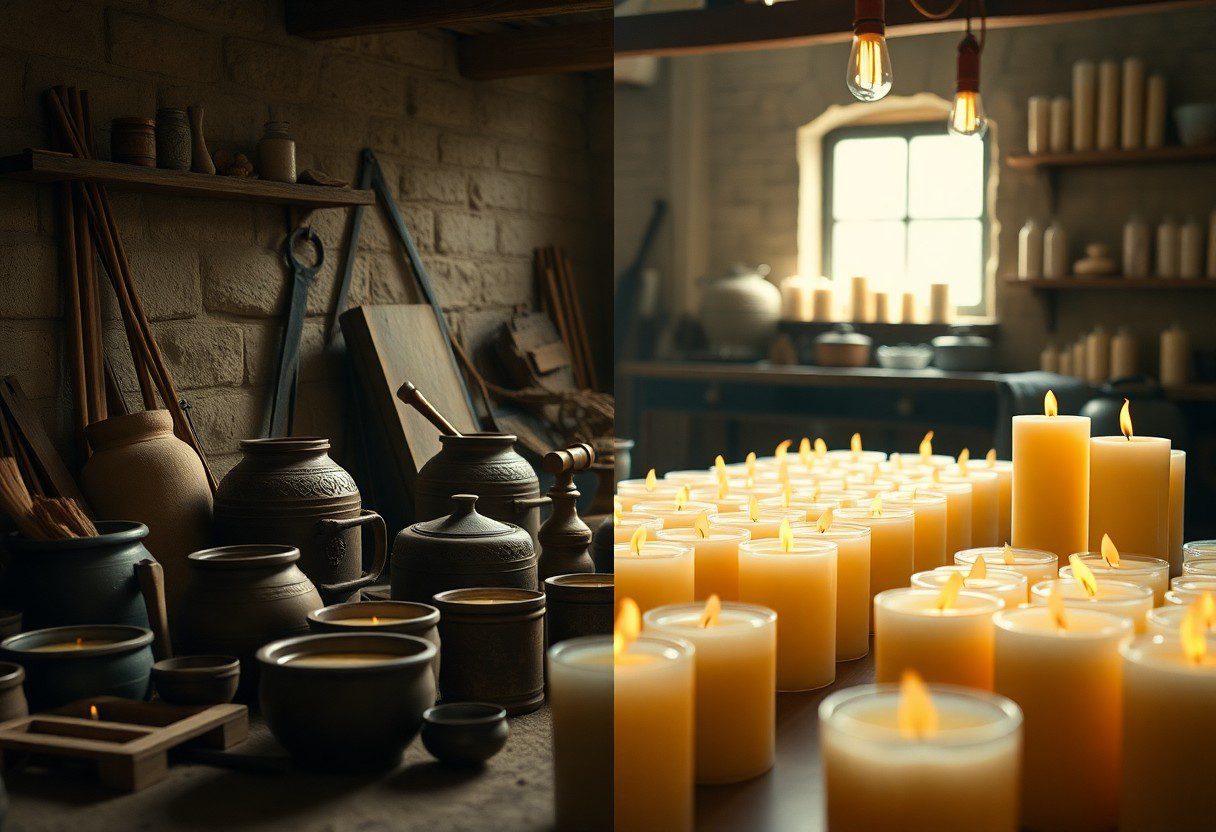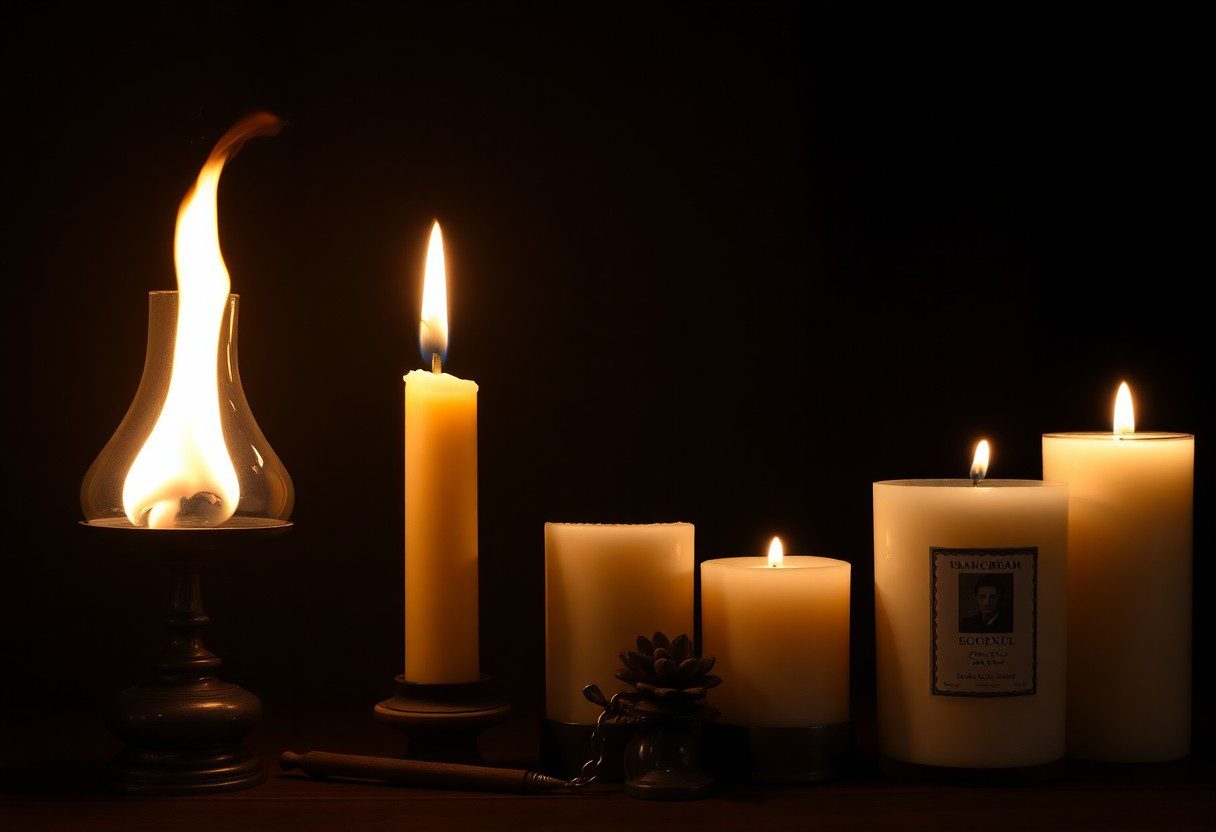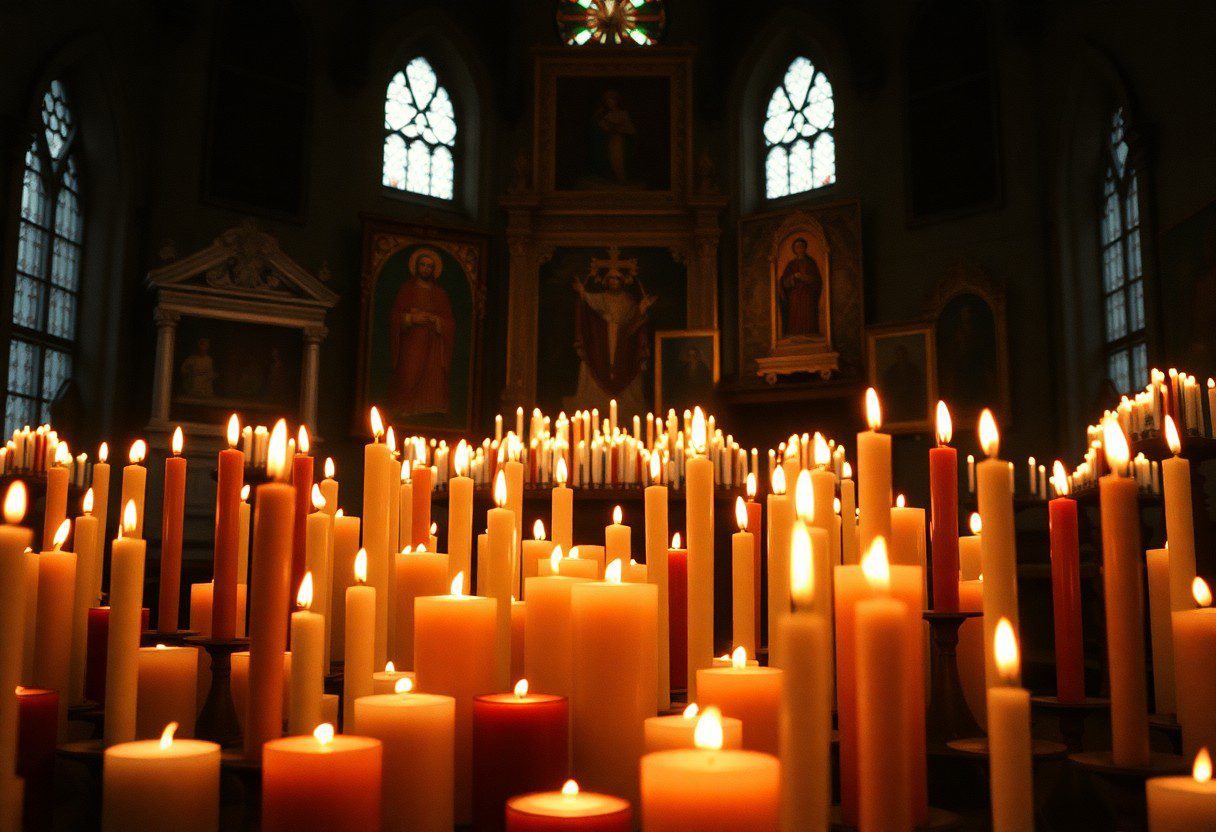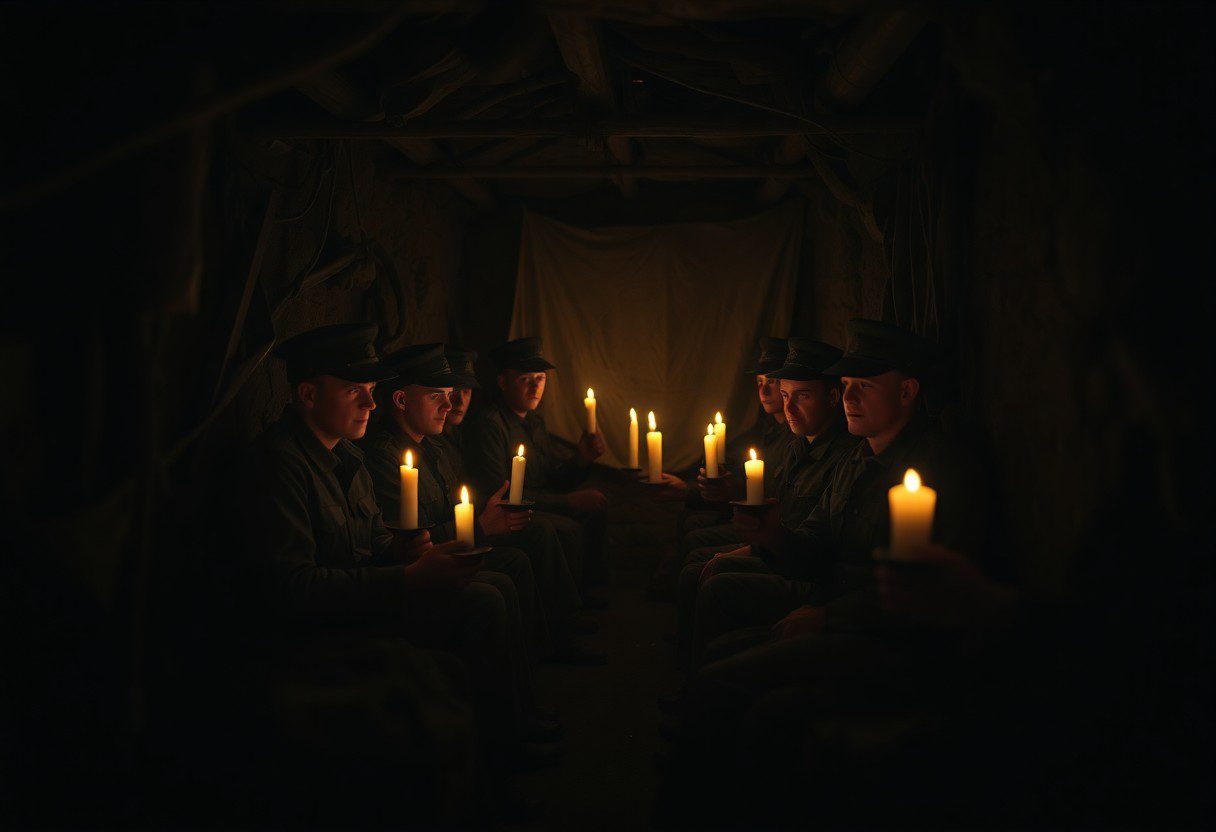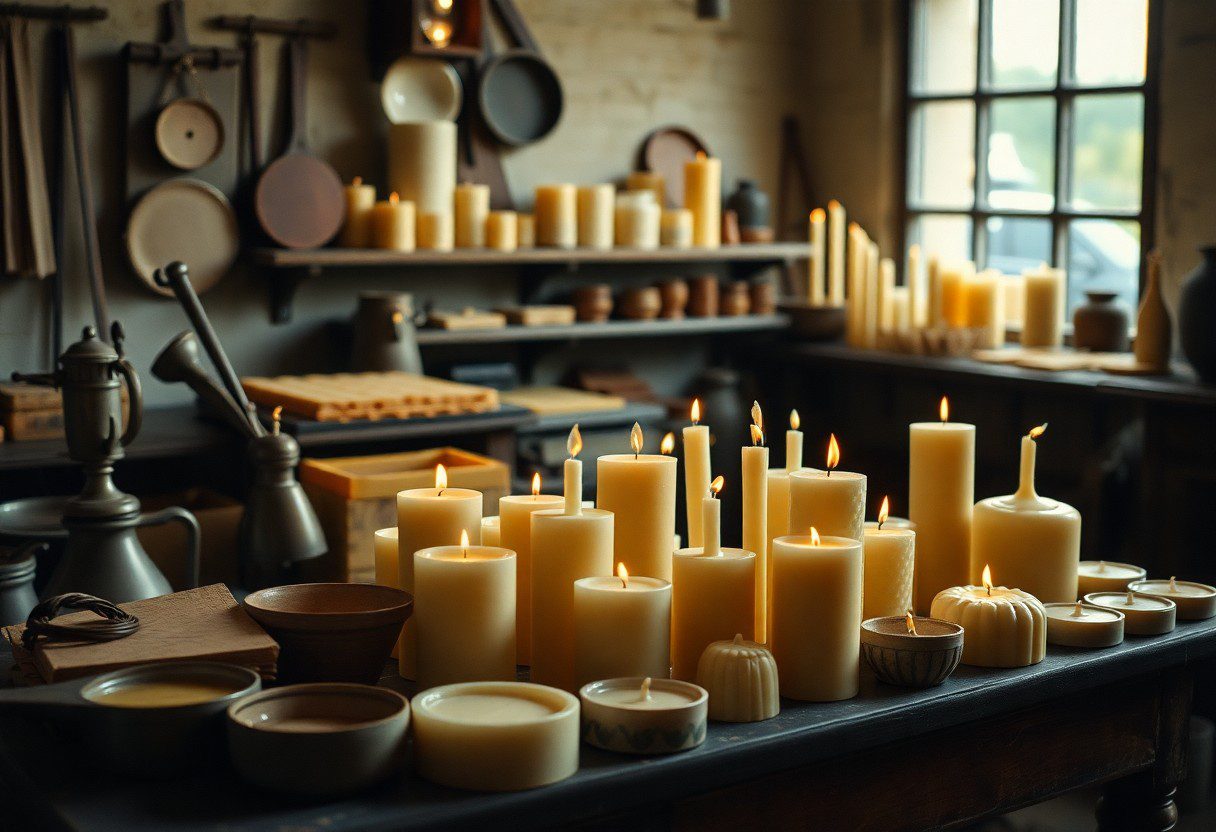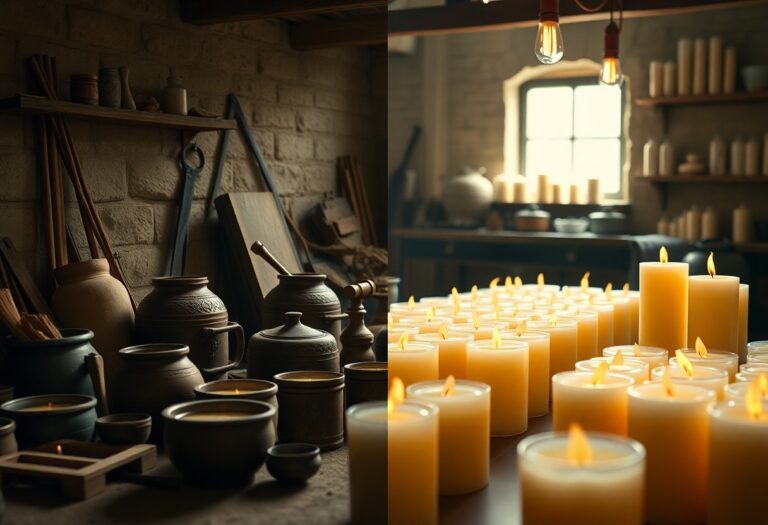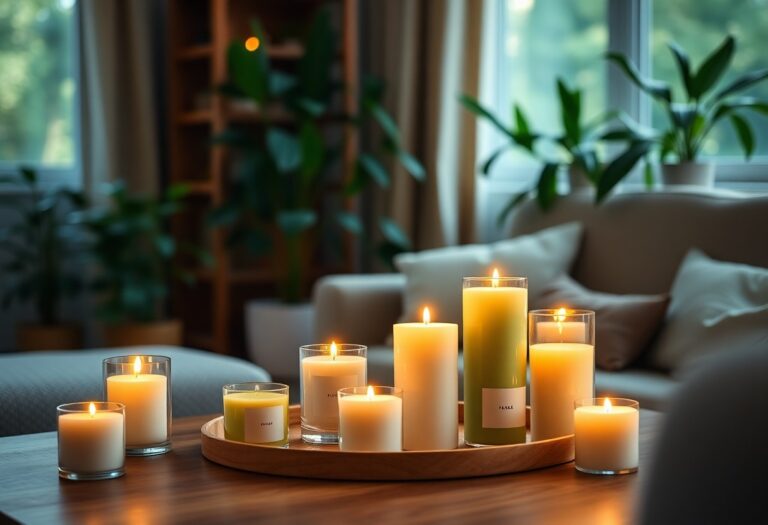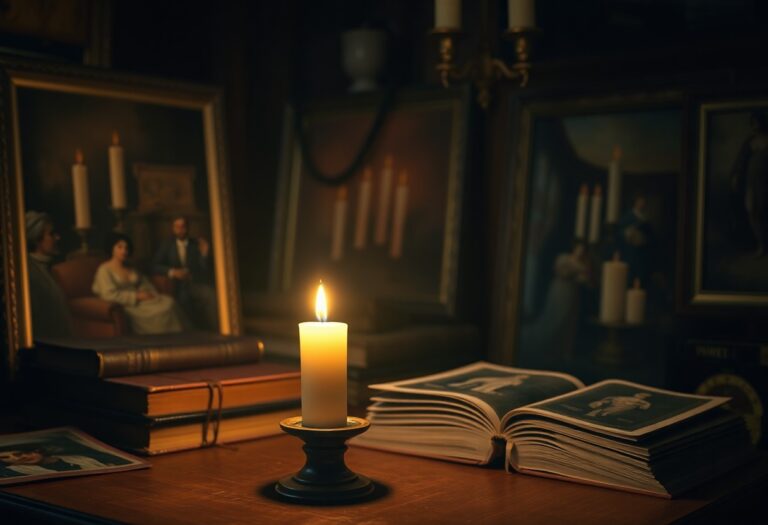The Role Of Candles In Religious Ceremonies – A Spiritual Light Through Time
With the flickering glow of a candle, you enter a realm of spiritual significance that has transcended centuries and cultures. Candles have long served as a potent symbol in various religious ceremonies, illuminating your path toward deeper connection, reflection, and reverence. Whether in the solitude of personal prayer or the collective energy of communal worship, their flame represents hope, healing, and guidance. Explore how the humble candle continues to hold immense importance in the sacred practices that shape your spiritual journey.
Historical Significance of Candles
While the use of candles in religious ceremonies spans across cultures and epochs, they signify more than mere illumination. From ancient rituals to modern worship, candles have been a constant reminder of the divine, offering a visual representation of the light that guides believers through darkness. By incorporating candles into your spiritual practice, you connect with centuries of tradition, acknowledging the symbolic association between light and the sacred. Each flicker of a flame carries the weight of countless prayers and intentions shared by those who came before you.
Ancient Rituals and Offerings
Against the backdrop of ancient civilizations, candles often played a pivotal role in religious ceremonies and rituals. In many cultures, offering candles to deities was a way to seek favor and ensure protection. These offerings could be made from tallow or beeswax and were believed to carry prayers into the heavens as they burned. When you introduce candles into your personal rituals, you engage in an age-old practice that resonates with the spiritual journeys of your ancestors, tapping into a lineage of sacred connections that transcend time.
Evolution Through Major Religions
About the evolution of candle usage, many major religions have adapted the symbolism of candles to fit their unique narratives and teachings. In Christianity, the use of candles during Mass symbolizes the light of Christ illuminating the darkness of sin. In Buddhism, the lighting of candles is often linked to the idea of *enlightenment*, serving as a reminder of the path to spiritual awakening. As you explore different faiths, you’ll find that candles not only enrich worship but also foster a sense of community among believers.
Ancient practices set the stage for the transformative role candles play today across various religions. In Hinduism, for instance, the *diya*, or oil lamp, is an emblem of purity and brightness, guiding the worshiper on their spiritual journey. Similarly, in Judaism, the lighting of the menorah during Hanukkah represents the miracle of the oil, showcasing tenacity and hope. The persistent use of candles throughout history illustrates that, regardless of the specific faith, the flame embodies your aspirations, intentions, and the light within your spiritual path.
Symbolism of Light in Spirituality
There’s a profound connection between light and spirituality that transcends cultures and religions. Light signifies purity, hope, and divine guidance, serving as a powerful symbol of enlightenment and spiritual awakening. In many traditions, including Christianity, the act of lighting a candle embodies your intentions and prayers, connected to the divine. For instance, if you’re curious about why do Catholics light votive candles?, you’ll discover that this practice reflects a deep desire for spiritual connection and divine intercession, making it a significant aspect of worship and personal reflection.
Light as Divine Presence
Below the surface of your everyday life, the flickering flame of a candle serves as a reminder of the divine presence that illuminates your path. Many religious ceremonies incorporate light as a representation of the sacred, providing comfort and reinforcing the belief that you are never truly alone. This light embodies the idea that spiritual beings are always near, guiding and protecting you through life’s challenges. In rituals, the lighting of candles invites the divine to partake in your sacred intentions, allowing you to experience a tangible connection to higher realms.
Candles and Their Spiritual Meanings
Around the world, candles are used to symbolize various states of consciousness and spiritual energies. Each color of candle carries its specific significance, which can relate to love, healing, prosperity, or protection. By incorporating candles into your spiritual practice, you harness their power to manifest your desires and intentions. For example, lighting a green candle can energize your connection to prosperity, while a blue candle may encourage peace and healing in your life.
And as you explore the meanings behind different candles, you may find that many people use them to enhance meditation and prayer. This practice not only helps to focus your mind but also creates a sacred space that invites positive energy. The act of lighting a candle can turn a simple moment into a significant spiritual experience, aiding in self-reflection and deepening your connection to the divine. Ultimately, candles serve as both a source of guidance and a reflection of your spiritual journey, illuminating the path toward enlightenment and personal growth.
Candles in Christian Ceremonies
If you’ve ever attended a Christian service, you’ve likely noticed the flickering candle flames creating an atmosphere of reverence and peace. Throughout the Christian tradition, candles hold a significant role during religious ceremonies, symbolizing light, purity, and the presence of the divine. They are often lit during key moments in worship, reminding you of the sacredness of the occasion and setting a tone of spirituality that enhances your connection to the divine. From the vibrant colors of Advent to the solemnity of funerals, the use of candles encompasses a wide range of emotions and meanings, each adding depth to the rituals and observances that define Christian practices.
Liturgical Use of Candles
Across many Christian denominations, candles are integral to liturgical celebrations. You may find them on the altar, displayed prominently during Mass or liturgies, signifying the presence of Christ as the Light of the World. The use of multiple candles also represents the community of believers coming together in faith, illuminating the physical and spiritual spaces within which worship occurs. For instance, during the Christmas season, the Advent wreath adorned with candles not only marks the passage of time leading to the celebration of the birth of Jesus but also enhances your anticipation and joy.
Symbolism in Sacraments
Between the different sacraments in Christian faith, candles serve as potent symbols rich with meaning. For example, during baptisms, a candle is often given as a reminder of the light of Christ illuminating new believers’ paths. This act signifies the transition into a life of faith, where the newly baptized is called to keep the flame of faith alive within them. Additionally, during weddings, candles set the scene not only for a beautiful ceremony but also represent the joining of two lives as they share a common light,, or in the case of unity candles, the merging of their individual lights into one.
Symbolism is inherent in the placement and use of candles during sacraments, emphasizing themes of rebirth, unity, and commitment. In the act of lighting candles, you participate in a tradition that transcends generations, connecting you to the broader community of faith that has come before you. Whether during baptism, marriage, or confirmation, the light from the candles serves as a reminder of the divine presence and support around you, encouraging you to reflect on the significance of your spiritual journey.
The Role of Candles in Eastern Religions
Many religions in the East incorporate candles into their rituals and ceremonies, serving as a manifestation of spiritual illumination and purity. Within these traditions, light symbolizes divine guidance and the quest for understanding. The flickering of the flame is often seen as a reminder of the transient nature of life and the importance of mindfulness in one’s spiritual journey. By lighting a candle, you engage not just in an act of worship, but also in an opportunity to meditate and reflect on your intentions, allowing the light to guide your thoughts and aspirations.
Buddhism: Light and Enlightenment
Above all, candles play a profound role in Buddhist practices, often used during meditation and ceremonies to symbolize the quest for enlightenment. Lighting candles in front of Buddha statues or altars represents the aspiration to dispel ignorance and bring forth wisdom. As you watch the flame dance, it serves as a reminder to embrace the path of compassion and mindfulness, illuminating your inner self while fostering a sense of connection with the broader community of practitioners.
Hinduism: Rituals and Festivals
Beside Buddhism, Hinduism richly celebrates the use of candles during its myriad rituals and festivals. You may find candles, or diyas, lit during important observances like Diwali, where the act of lighting these lamps signifies the victory of light over darkness and knowledge over ignorance. The glow of these candles creates a sacred atmosphere, inviting you to participate in communal celebrations and personal devotion simultaneously. Each flickering light represents an offering to the divine, manifesting your prayers and intentions in a tangible, illuminating form.
Light plays a fundamental role in Hindu rituals and festivals, offering an opportunity to engage all your senses in the spiritual experience. During celebrations such as Diwali, the atmosphere is filled with joy and reverence, as countless diyas and candles are lit and placed around homes and temples. This act not only honors the divine but also fosters a sense of community and togetherness. When you engage in this practice, you partake in a age-old tradition that connects you with your roots while further igniting your inner light.
Contemporary Practices
Despite the passage of time and the evolution of religious practices, candles continue to play a significant role in contemporary spiritual ceremonies. In many modern faiths and beliefs, their flickering flames serve as a powerful symbol of hope, enlightenment, and connection to the divine. You may find that participating in candle-lit rituals invigorates your spiritual journey, enhancing meditative practices and allowing you to focus your intentions. Contemporary ceremonies often incorporate various candle colors, each representing unique meanings, which can deepen your experience and understanding of the ritual. For an insightful exploration of this topic, you can read more about – The Candles and Their Symbolism.
Modern Spiritual Uses of Candles
After observing diverse spiritual communities, you might notice that candles have become a mainstay in various practices. Whether it’s for meditation, prayer, or setting intentions, lighting a candle can create an ambience conducive to exploring your spiritual self. You may engage in practices such as envisioning your desires while lighting a candle or participating in rituals that involve creating a peaceful environment. These modern uses are often deeply personal, allowing you to establish a spiritual connection that resonates with your beliefs and personal experiences.
Environmental and Ethical Considerations
To fully appreciate the role of candles in contemporary practices, it’s necessary to address the environmental and ethical considerations associated with their production and use. Your choice of candles can significantly impact the planet; therefore, many people are turning to more sustainable options that prioritize eco-friendly materials. Scented candles, often made from paraffin wax, could release harmful chemicals when burned, so you might prefer alternatives made from natural waxes like soy or beeswax, which are generally considered safer for both you and the environment.
Understanding the implications of your candle usage can lead you toward choices that align with your values, fostering a deeper sense of purpose in your rituals. By opting for responsibly sourced materials and supporting brands that prioritize sustainability, you enhance not only your spiritual practices but also your commitment to the planet. Additionally, being aware of the implications of candles made from non-renewable resources and synthetic fragrances can help you avoid some of the potential environmental harm associated with traditional candle manufacturing. You can ignite your spiritual light while making choices that contribute positively to the world around you.
Personal Reflection and Meditation
To engage deeply with the spiritual role of candles, personal reflection and meditation can be profoundly enriching practices. By incorporating candlelight into your moments of introspection, you create an ambiance that fosters connection to your inner self and the greater universe. Candles offer more than just illumination; they serve as a symbol of hope, guidance, and clarity, inviting you to commence on a journey of self-discovery. As you light a candle, consider the intentions you wish to set—this simple act can transform your space into a sanctuary for contemplation and prayer.
Creating Sacred Spaces
With the flickering glow of a candle, you can transform any environment into a sacred space that underscores the importance of your spiritual practices. Selecting a dedicated area in your home, free from distractions, can enhance your meditative experiences. Arrange your candles thoughtfully, allowing their warm light to illuminate your reflections and insights. As you light each candle, visualize it dispelling any negativity or overwhelm, inviting peace and tranquility into your life. This intentional setup encourages you to honor your spiritual rituals while simultaneously marking a distinct boundary between the outside world and your personal journey within.
Mindfulness and Candle Rituals
Meditation is further enriched by the mindfulness that candle rituals foster. As you focus on the flame, allow your thoughts to drift as you embrace the present moment. Your breathing synchronizes with the flicker of the candle, encouraging a deep sense of alignment with your thoughts and emotions. This practice helps ground you, reminding you of the importance of stillness and reflection amidst the chaos of everyday life.
A candle ritual can remarkably enhance your capacity for mindfulness. When you focus your attention on the flame, each flicker can inspire a deeper connection to your thoughts and feelings. Furthermore, as you engage in this practice, you may find that the mere act of lighting a candle becomes a ritualistic marker, signaling to your mind that it is time to pause, reflect, and engage in self-care. The combination of the candle’s glow and stillness can create a powerful spiritual atmosphere that not only calms the mind but also opens your heart to insights that may emerge, guiding you through your personal journey of healing and growth.
Conclusion
Hence, as you reflect on the role of candles in religious ceremonies, it becomes evident that these illuminating symbols have transcended cultures and eras, serving as vital expressions of spirituality and connection to the divine. From enhancing the ambiance of sacred spaces to representing the light of knowledge and hope, your understanding of candles’ significance can deepen your appreciation for the rituals that utilize them. Embracing the traditions that incorporate these glowing beacons allows you to participate in a timeless dialogue with the past, present, and future of spirituality.
In your journey towards a greater awareness of religious practices, acknowledging the multifaceted roles that candles play can enrich your experience and foster a sense of community. Whether you engage with these rituals personally or observe them within various faiths, you contribute to a shared legacy of seeking illumination in moments of worship, reflection, and celebration. The light of the candle reflects both an inner and outer journey, guiding you through the enduring exploration of the sacred in everyday life.
Q: How are candles used in different religious ceremonies?
A: Candles play a significant role in various religious ceremonies across cultures. In Christianity, they symbolize the light of Christ and are often used during services, especially in Advent and Lent. In Hinduism, candles or diyas are lit during festivals like Diwali to dispel darkness and invite positivity. Similarly, in Buddhism, candles represent enlightenment and are placed on altars or used in meditation practices. Each tradition employs candles not just for illumination but as a means of connecting with the divine and enhancing the spiritual atmosphere of the ceremony.
Q: What is the historical significance of candles in religious practices?
A: The historical significance of candles in religious practices dates back thousands of years. Candles were used in ancient rituals as a way to honor deities, signal the beginning of ceremonies, and create a sacred ambiance. Many cultures associated fire with purifying powers, believing that lighting a candle could facilitate communication with the divine. This symbolism has persisted, with candles often representing hope, faith, and spirituality in many modern practices. The tradition has evolved, but the essence of using candles to mark significant moments and foster a connection with spirituality remains strong.
Q: What symbolism do candles hold in personal spiritual practices?
A: In personal spiritual practices, candles hold a deep symbolism often connected to intention-setting and mindfulness. Lighting a candle can serve as a focal point for meditation, helping individuals center themselves and invite clarity into their thoughts. Each color of a candle is believed to carry specific meanings—for instance, white often symbolizes purity, while green represents growth. Many people use candles during prayer or rituals to create a serene environment, allowing for a deeper exploration of their spiritual beliefs and intentions. The act of lighting a candle can transform a space, creating a sanctuary for reflection and connection to the inner self.

